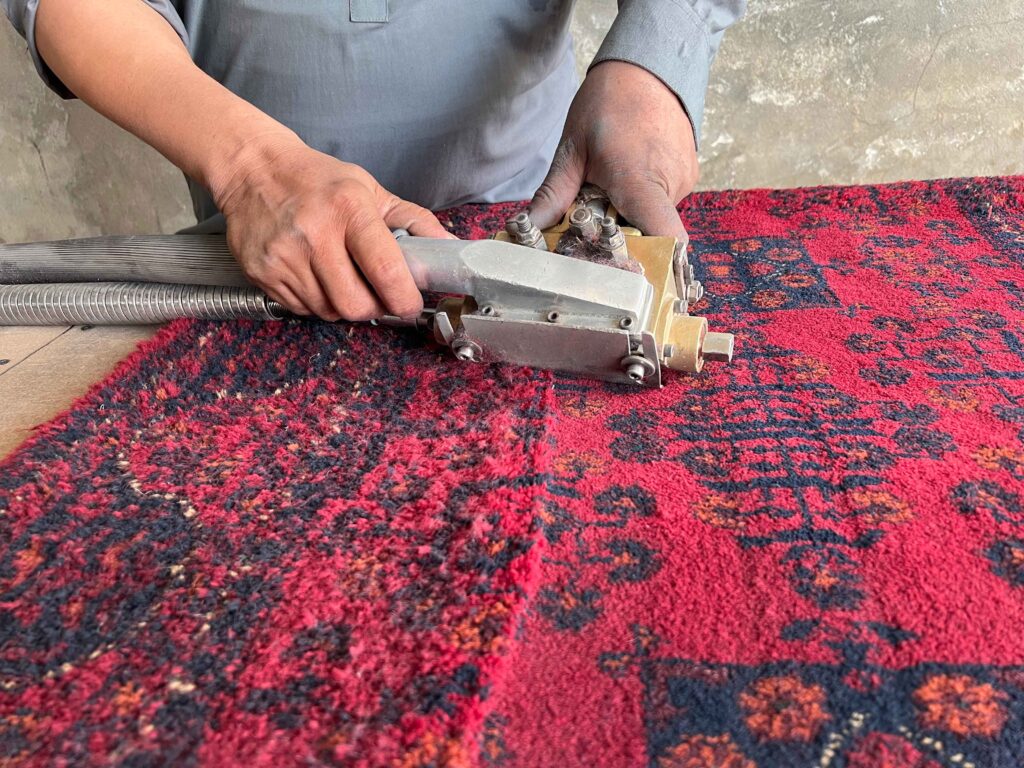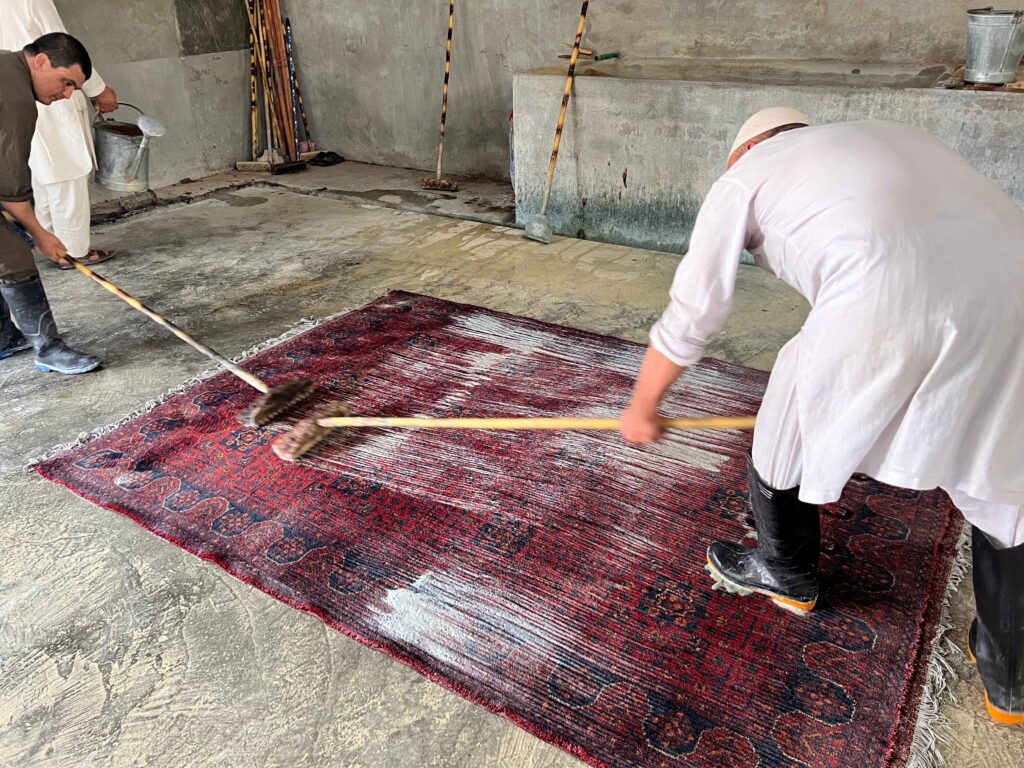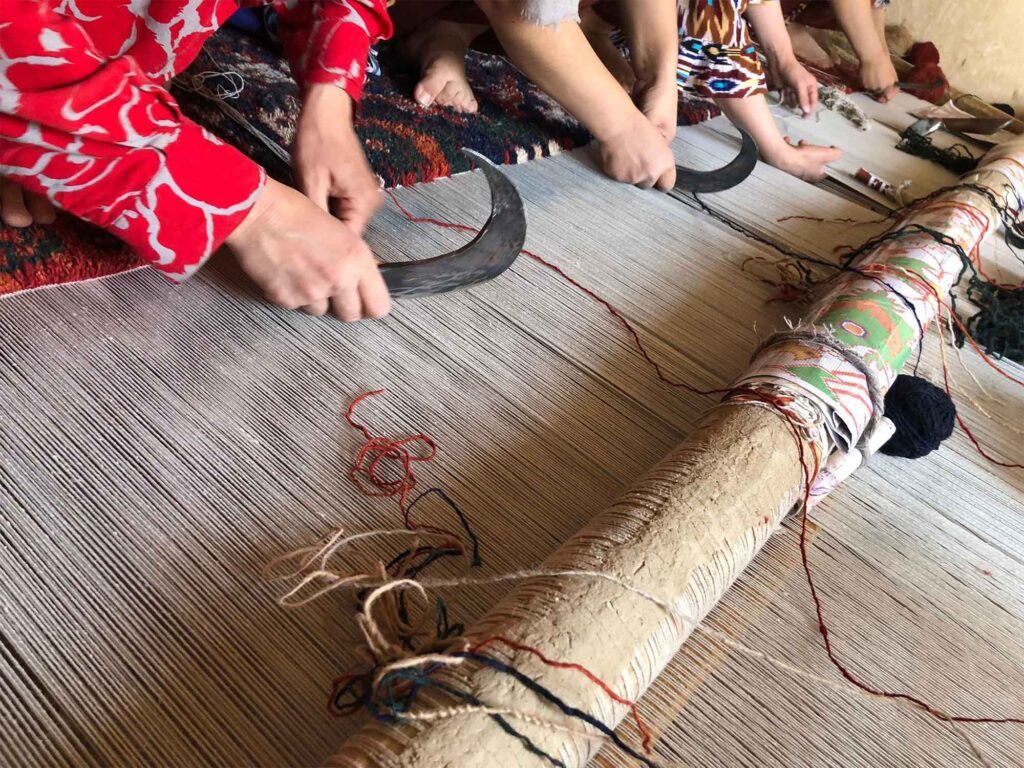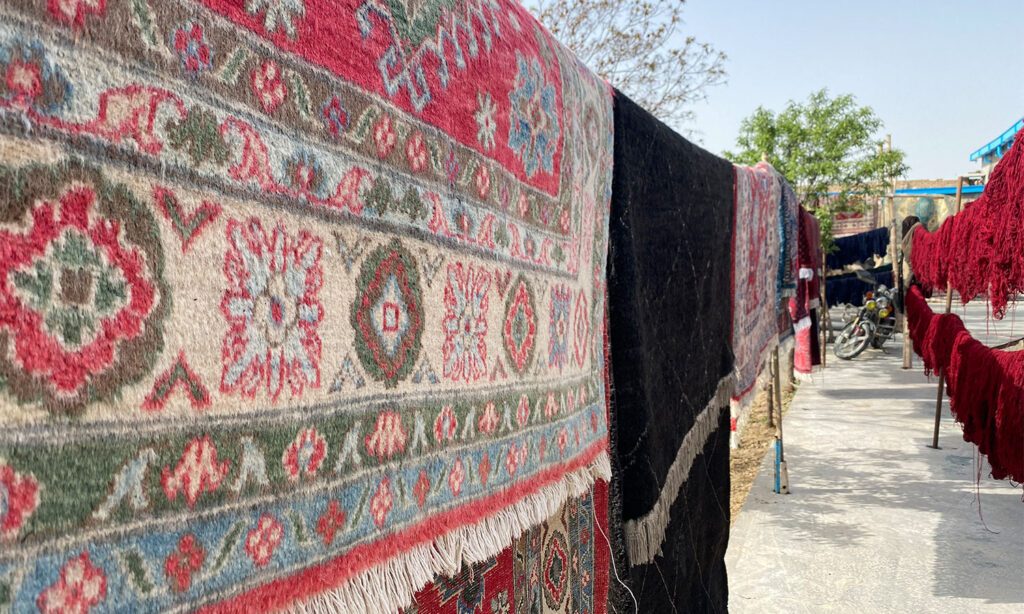Embark on a mesmerizing voyage into the enchanting world of handmade rugs, where timeless masterpieces are born through centuries-old artisanal skills and boundless creative genius. In this captivating blog, join us as we delve deep into the intricate craftsmanship that goes behind creating these extraordinary works of art – from carefully hand-selecting wool fibers to meticulously perfecting every exquisite detail. Immerse yourself in an awe-inspiring exploration that unveils the unwavering dedication and unparalleled artistic mastery infused into each one-of-a-kind creation.

Step 1: Selection of Wool Fibre
The process of creating a handmade rug starts with the careful selection of wool, an essential element that defines each handcrafted masterpiece. Choosing the right wool is crucial as it determines the quality, texture, and durability of the final product. In the realm of handmade rugs, two main types of wool are commonly used: machine-spun and hand-spun. These distinctions represent the beginning of a journey where tradition and craftsmanship come together seamlessly.
Machine-spun wool, easily obtained from commercial sources, offers convenience but lacks the superior quality, durability, and vibrancy of hand-woven wool rugs. When it comes to creating timeless works of art in the form of handmade rugs, Yamil Craft prefers the labor-intensive and authentic approach of using hand-spun wool. Hand-spun wool is a testament to our dedication to preserving heritage and traditional craftsmanship. Unlike its machine-made counterpart, handspinning requires several steps before dyeing can take place. The locally grazed sheep in the enchanting hillsides of Northern Afghanistan are an invaluable source for premium-quality and lustrous wool. Harvesting this exceptional fleece is done with great care for both animals and their environment. Skilled shearers, with a deep understanding passed down through generations, skillfully gather the wool. They excel not only in obtaining top-notch quality but also prioritize the welfare and well-being of the animals. This compassionate and ethical approach highlights how rug-making is closely intertwined with nature.
To enhance the quality of the wool, it goes through a process that connects it with nature. The wool is carefully exposed to the sun’s drying effects in Northern Afghanistan, where dry and sunny weather prevails. This step has two purposes: firstly, it removes any remaining moisture from the fibers, ensuring optimal conditions for further processing; secondly, it allows the raw material to absorb not only color during dyeing but also warmth and essence from its natural environment. After this sun-drenched phase, a manual sorting process meticulously eliminates impurities present in the wool. This meticulous attention guarantees that only superior and clean fibers are used in crafting these exceptional rugs. Local craftsmen from Aqcha, Afghanistan, play a crucial role in the subsequent phase by utilizing traditional spindles to transform these fibers into yarn. This creates a captivating and tangible link to the region’s history and culture as the skilled weaving artisans bring together their expertise with the essence of the land and its sheep.

Step 2: Dyeing Process
Creating a wide range of colors for the handmade rugs involves a fascinating process of dyeing. To achieve this diversity, separate pots are used, each filled with a different colored dye extracted from various natural sources such as plants and minerals. These pots act like magical cauldrons, each holding the potential for a unique hue that contributes to the high quality and uniqueness of Afghan rugs.
The journey begins as the bundles of yarn are gently submerged into these pots, and the temperature is raised to around 200 degrees Celsius (400 Fahrenheit). It’s a transformative dance between the wool and the dye, requiring careful monitoring. The goal is to ensure that every strand of yarn absorbs the dye evenly. Therefore, it must be constantly stirred for hours – an essential step in guaranteeing uniform color distribution and vibrant, captivating shades.
Once the yarn bundles have soaked up the colors and are just right, they are set aside in a spacious area, where they can bask under the sun’s gentle rays until they reach complete dryness. This step of allowing them to embrace the sunlight goes beyond mere drying – it fosters an intimate bond with nature. Not only does it enable the wool to absorb stunning hues, but it also allows it to imbibe both the radiance and essence of its surroundings. Thus, transforming each strand into an exquisite and captivating tapestry that intertwines human artistry with nature’s warm embrace.

Step 3: Weaving Process
Weaving is the heart and soul of the handmade rug-making process, where the rugs truly come to life, infused with vitality and rich storytelling. This stage of craftsmanship is nothing short of magical, where vivid hues and intricate patterns, meticulously designed on millimeter-specific graph papers, are expertly brought to life by the skilled hands of artisans. The result is a tangible creation that transcends time and culture.
The journey begins with the creation of intricate designs, a meticulous process that serves as the blueprint for the rug’s patterns. Each design is carefully plotted on millimeter-specific graph papers, ensuring that every detail, no matter how minute, is accounted for. This precision is absolutely critical, as it forms the foundation for the weavers’ work, guiding them through the intricate journey of transforming these patterns into magnificent, handwoven rugs.
The artisans responsible for weaving these rugs are highly skilled individuals, and it’s important to note that a majority of them are exceptionally talented women artisans hailing from Aqcha in Afghanistan. Their expertise is not limited to craftsmanship; they are true artists, infusing every rug with a deep connection to their cultural heritage and a profound understanding of the weaving traditions passed down through generations.
Each weaver is equipped with a loom, the wool that was so meticulously prepared, weft yarn, and all the necessary tools to embark on their creative journey. However, this journey is not a short one; the duration of weaving a single rug can vary significantly, ranging from 2 to 12 months. The time required depends on various factors, including the rug’s size and intricacy, but what remains constant is the dedicated labor and unwavering attention to detail that goes into every rug.
Weavers invest their patience, passion, and precision into each and every stitch. It’s a painstaking process where they meticulously craft every inch of the rug, ensuring that every thread is in its perfect place. The result is an extraordinary masterpiece that tells a unique story, narrating the history and culture of the region from which it hails. In the hands of these skilled artisans, the art of weaving breathes life into the handmade rugs, connecting the weavers, the designs, and the materials into a harmonious whole. These rugs are more than just floor coverings; they are visual and tactile representations of human artistry, culture, and tradition.

Step 4: Finishing Process
The final stage in the creation of handmade rugs is a critical one, known as the finishing process. This stage is where the rugs are meticulously fine-tuned to ensure they meet the highest standards of quality and aesthetics. It is a comprehensive and thorough process that involves several meticulous steps.
First and foremost, the finishing process begins with an ultra-careful cleaning to ensure that the newly woven rugs are absolutely free from any impurities or debris. To accomplish this, the rugs are placed in large cylindrical cages designed for dusting. These spacious enclosures are ingeniously engineered to gently remove any dust or debris without causing the slightest damage to the delicate wool fibers. This step is crucial to maintain the rug’s pristine condition and to ensure that its fibers are perfectly clean and free from any foreign particles.
Following the dusting process, the cleaning continues with great care. Here, only water and natural soap are employed, with absolutely no harsh chemicals involved. This eco-friendly approach takes cleanliness to the next level. Each individual wool fiber is meticulously cleaned with a gentle lather created by these natural agents. This method is not only effective in cleansing the fibers but also in preserving their integrity and the vibrancy of the colors used in the rug.
To achieve a smooth and refined finish, the edges of the rugs are attentively trimmed once they have been properly dried. This meticulous process not only enhances the aesthetics of the rug but also ensures its durability. Any loose ends are securely fastened through heat treatment, making sure that the rug remains intact and capable of withstanding the test of time.
To achieve a parallel and uniform appearance, the edges of the rugs are further refined. This is achieved by carefully placing the rugs onto two folding planks and stretching them out. This process, known as blocking, ensures that the rug’s edges are perfectly straight and aligned along all sides, creating a harmonious and polished look that is not only visually pleasing but also a sign of impeccable craftsmanship.
In the final stages of finishing, any unnecessary or mismatched colored knots are expertly trimmed away, enhancing the overall appearance of the rug. The fringes of the rug receive special attention as well. They undergo precise trimming and binding techniques, which not only prevent knots from unraveling but also contribute to an overall polished and coordinated appearance. As a final touch of refinement, sometimes the fringes are dyed to complement the intricate design of the rug, adding a subtle yet significant detail that harmonizes with the rug’s overall aesthetic.
The finishing process is an art in itself, where each rug is carefully examined and meticulously treated to ensure that every detail remains in pristine condition. It’s the stage where the rug is transformed from a raw creation into a work of art, reflecting not only the weaver’s skill but also the commitment to preserving the rug-making tradition. It’s here that the rug achieves its final, perfect state, ready to be appreciated as a symbol of cultural heritage and artistic mastery.

Immerse yourself in the captivating process of handcrafting rugs, where every step is an enchanting combination of skill, passion, and heritage. The journey begins with a meticulous selection process for only the finest wool; each thread carefully chosen to bring out the colors and textures that will grace these masterpieces. Then comes the intricate weaving techniques – centuries-old methods passed down through generations – transforming strands of yarn into stunning patterns that tell stories woven within their fibers. Finally, after hours of dedicated work and attention to detail, these rugs are completed with a finesse reserved for true works of art. Beyond mere decoration, they embody cultural traditions and showcase the talents of artisans who have poured their heart and soul into creating tangible pieces brimming with craftsmanship from another era.
Next time you run your fingers across the smooth and intricately crafted surface of a carefully handmade rug, take a moment to truly immerse yourself in the awe-inspiring beauty that emanates from its fibers. In doing so, let us honor and safeguard this timeless art form that has masterfully interwoven creativity and tradition for countless generations yet to come.




Very helpful blog, covers a detailed explanation of how rugs are made. No wonder why handmade rugs are so desired.